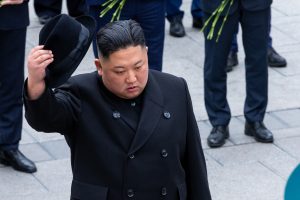There is often a significant disparity between North Korea’s stated policies and their implementation. In fact, looking back on its history, one could persuasively argue that Pyongyang has frequently failed to fulfill its public promises.
For instance, North-South reunification was Kim Il Sung’s stated goal since the founding of the country in 1948. The Korean War was an attempt to forcibly reunify North and South, and when that became unachievable following the U.S. intervention, Pyongyang resorted to terrorism. However, that too was unsuccessful in bringing about South Korea’s collapse. North Korean-led unification is unimaginable today, and Kim’s grandson, Kim Jong Un has turned to his own form of realism, outright rejecting the targets of his country from its founding.
For decades since the Cold War, North Korea referred to itself as “Paradise on Earth.” Even today, schools display the slogan, “We have nothing to envy in the world.” This might have functioned as effective propaganda until the 1960s, when South Korea was also poor, but the economic disparity between the two countries has widened drastically, with conditions in North Korea tending to be extremely harsh, especially since the end of the Cold War. There have been some improvements since the 1990s, but even so, rural areas are still suffering food shortages.
Kim Il Sung made “For the Complete Victory of Socialism” a target in the constitution of the ruling Workers’ Party of Korea (WPK). At the time this was adopted, it was assumed that the entire Korean Peninsula, including the southern half, would experience a socialist revolution. His son Kim Jong Il preferred the term “Construction of a Strong and Prosperous Socialist Nation (Gangseongdaeguk).” This “Strong and Prosperous Nation” was to be formed of three pillars: one political and ideological, one military, and the third economic. North Korea itself determined that the first two pillars had been achieved at sufficient standards and set economic construction as a central national issue.
Although no specific, numerical targets were declared, Kim Jong Il boasted of an “open gate for a Strong and Prosperous Nation” by 2012, marking the 100th anniversary of Kim Il Sung’s birth. This was meant to be a slogan instilling hopes for economic development among the people, but Kim Jong Il died suddenly at the end of 2011. In the end, this “Strong and Prosperous Nation” was quietly retired.
Kim Jong Un, who assumed the role of supreme leader while still in his 20s, spent his middle and high school years in Switzerland and is part of the internet generation. So, it is thought that he has a better understanding of the situation in his own country than his father and grandfather, who tended to seek out ideals.
However, Kim appears to have his own struggles with ideals and reality. In addition to directly recognizing the harsh economic conditions in North Korea, he also clarified his support for the people as he teared up while summing up the previous year. “My desires were burning all the time, but I spent the past year feeling anxious and remorseful for the lack of my ability,” he said in his New Year’s Address on January 1, 2017. In the party constitution, the basic political system of “military first (Songun)” was also replaced with “People-first politics.”
The COVID-19 pandemic was an economic crisis for the entire world, but for North Korea, the timing couldn’t have been worse. In 2018, three inter-Korean summits were held, as well as the North Korea-United States Singapore Summit with then-U.S. President Donald Trump. The following year, however, as a result of failed negotiations with the U.S., North Korea was unable to achieve security guarantees or even a partial lifting of sanctions. The pandemic began immediately after that, and the closing of the borders inevitably led to an increasingly difficult economic situation in North Korea.
Kim Jong Un lamented the weakness of the country’s healthcare system and ordered the construction of the Pyongyang General Hospital in a prime location within the capital. However, the North Korean media stopped reporting on this highly touted project at some point. Satellite photos show that construction of the large building was completed quickly, but there is likely a decisive shortage of crucial medical equipment and medicine. With no talk of the hospital’s opening, the pandemic began to wind down anyway.
The failure to implement public promises is not limited to anti-South Korean and unification issues or economic challenges. In August of last year, election laws were revised, and the principle of competition was introduced, albeit in a limited way. These revisions allow for the partial introduction of a screening stage, with pre-election candidates selected by ballot. It is thought that this measure was aimed at relieving pressure from the public, but to date, an election for delegates to the Supreme People’s Assembly has not happened, though it was supposed to happen in March of this year.
Meanwhile, Kim Jong Un stated that North Korea would launch three additional reconnaissance satellites this year, but only one was launched in May, and it was a failure. Additionally, next year marks the last year of the “Five-year plan for the development of national defense science and weapons systems” announced in 2021. North Korea also appears to be a long way from owning nuclear submarines, a stated goal of the plan. While neighboring countries prefer that North Korea does not fulfill its public promises of weapons development, they still worry that it might make good on them in the future.

































